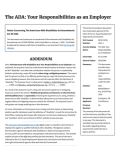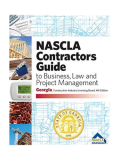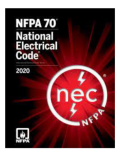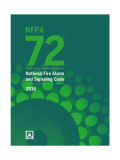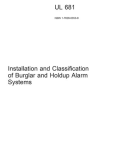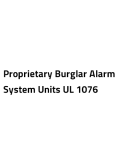Georgia Low Voltage-Alarm (Class LV-A) Contractor License
The Low Voltage-Alarm (Class LV-A) Contractor License allows you to do the following work:
- Install and service:
- Alarms
- Low voltage systems
How to Get the Low Voltage-Alarm (Class LV-A) Contractor’s License in Georgia?
- Meet the experience and education requirements:
- One year of experience in low-voltage wiring in the license category
- A maximum of six months can be credited as part of the required experience by completion of courses in electronics through a school of engineering technology or a technical trade school
- Submit a completed and notarized application with the corresponding fee to the Georgia Construction Industry Licensing Board
- Present the documents listed below, along with the application form:
- Background Check (It can be obtained at the local law enforcement office)
- Three notarized original reference forms from people that have knowledge of the applicant’s previous work (At least one reference must be from a licensed low voltage contractor)
- Work Experience Record
- Secure & Verifiable Documents
- Affidavit of Citizenship
- Immigration Documents (If applicable)
- Disciplinary Action/Sanctions (if applicable)
- Court Documents
- Letter of Explanation
- Expect an approval letter from the Board
- Register with AMP/PSI© to take the applicable exam
- Pass the exam with a minimum score of 70%
- Access the Board’s Online Professional Licensing website to check the application status
- Expect a response from the Georgia Construction Industry Licensing Board / Low Voltage Division regarding the license
Georgia Low Voltage-Alarm (Class LV-A) Contractor License Exam Prep Course
Georgia Low Voltage-Alarm (Class LV-A) Contractor License Exam
Below is all the information related to the trade exam, including the official reference list.
Georgia Low Voltage-Alarm (Class LV-A) Contractor Trade Exam
- Testing Method: Computer based testing; open book
- Testing Company: PSI©
- Number of Questions: 90
- Types of Questions: Multiple choice
- Time Allowed: 4 Hours
- Minimum Passing Score: 53 Questions (70%)
- Subjects Involved (No. of Questions):
- Pretest questions (15) *Pretest questions do not affect the score
Regulations, Laws, and Administrative Functions (18)
Comply with Laws (4)
- Workers' compensation
- Unemployment insurance
- Employer's tax guide (circular E)
- Georgia Construction Industry Licensing Board (complaint procedures, function of, renewal, etc.)
- State sales and use tax
- Business license
- American's with Disabilities Act (ADA)
Comply with Regulations (14)
- Obtain necessary low voltage permits and inspections
- Code of Federal Regulations, Title 29, Part 1926 (OSHA)
- National Fire Protection Association (NFPA)
- Underwriter's Laboratory (UL) or other appropriate certification
- National Electrical Code (NEC)
- Insurance: liability, property damage, auto, etc.
- Accident or incident reports
Installation and Servicing (57)
Read blueprints to determine installation requirements (10)
- Determine if equipment meets the NEC, NFPA, ADA, and local requirements
- Select equipment to be installed considering design specifications, customer preferences, and physical environment: power supplies, transform ers, batteries, smoke/heat detectors, water flow valves, etc.
- Commercial
- Health care (hospital, nursing home, personal care, etc.)
- Places of assembly (stadium, church, auditorium, etc.)
- Industrial
- Hazardous
- Non-hazardous
- Residential
- Commercial
- Select type and gauge of wire to be installed
- Determine and/or verify locations of devices/equipment/wiring
- Determine the impact of designed floor space (modular furniture, fixed walls, etc.) on installation
- Identify symbols on blueprint legend
- Identify fire wall location
- Identify types of circuits (series, parallel, normally open/closed, EOL, etc.)
Determine how distribution methods (wiring/cabling) affect building structural and installer safety (10)
- Commercial
- Industrial
- Hazardous
- Non-hazardous
- Residential
Cable/Wire Installation – Interior (20)
- Select cabling/wiring route (risers, plenums, etc.)
- Install conduit/tubing according to job specifications
- Pull cable/wire through conduit or through ceiling
- Size and drill holes through existing construction
- Fish cable/wire through existing construction
- Determine and place cable/wire supports at specified intervals
- Splice or terminate cable/wire at specified locations (equipment or device end)
- Label cable/wire during or after installation
- Repair fire-rated assemblies (walls, floors, ceilings, etc.)
- Install lightning and surge protection
- Install bonds and grounds at specified locations
- Observe safety considerations during installation (hard hat, safety glasses, foreign voltage, etc.)
- Install specified equipment: mounting devices, control panels, PBX/KSU, patch panels, etc.
- Test all installed devices for proper operation
- Evaluate installation for accepted standards of workmanship
Cable/Wire Installation – Exterior (13)
- Select cabling/wiring route
- Install conduit/tubing according to job specifications
- Pull cable/wire through conduit, direct burial, or aerial
- Size and drill holes through existing construction
- Determine and place cable/wire supports at specified intervals
- Splice or terminate cable/wire at specified locations (equipment or device end)
- Label cable/wire during or after installation
- Repair fire-rated assemblies (walls, floors, ceilings, etc.)
- Install lightning and surge protection
- Install bonds and grounds at specified locations
- Observe safety considerations during installation (foreign voltage, hazardous gases, proper safety equipment, etc.)
- Test all installed devices for proper operation
- Evaluate installation for accepted standards of workmanship
Documentation (4)
- Provide documentation regarding customer installation: type of device, location, wiring, owner's manual, user guide, programming record (hard copy, diskettes, tape, etc.)
- Commercial
- Residential
- Industrial
- Provide documentation regarding customer installation: type of device, location, wiring, owner's manual, user guide, programming record (hard copy, diskettes, tape, etc.)
- PSI© Low Voltage-Alarm (Class LV-A) Official Content Outline
Georgia Low Voltage-Alarm (Class LV-A) Contractor Book Set
This set of books includes all required references for the Low Voltage-Alarm (Class LV-A) exam. Orders placed before 2 PM are shipped the same day via UPS and a tracking number is emailed before 3 PM.
GEORGIA LOW VOLTAGE-ALARM (CLASS LV-A) - BOOK SET WITHOUT TABS INCLUDES ALL BOOKS FOR TRADE AND BUSINESS EXAMS
Sales price: $1,601.65-
GEORGIA LOW VOLTAGE-ALARM (CLASS LV-A) - BOOK SET WITH TABS INCLUDES ALL BOOKS FOR TRADE AND BUSINESS EXAMS
Sales price: $1,681.65
Georgia Low Voltage-Alarm (Class LV-A) Contractor Exam Books
Books Allowed in Testing
-
The Americans with Disabilities Act of 1990 (...Your Responsibilities as an Employer
r687 1$20.00$20.00 -
The Georgia NASCLA Contractors Guide to Busin...Georgia NASCLA Contractors Guide to Business
r688 1$109.00$109.00 -
The Circular E is a document published by the...IRS Circular E
r310 1$24.51$24.51 -
OSHA (CFR 29 Part 1926) is the leading safety...CFR (OSHA) Title 29 Part 1926 (1903 1904 1910
r84 1$30.00$30.00 -
The world's most widely adopted safety code, ...NFPA 70 National Electrical Code 2020
r836 1$180.31$180.31 -
NFPA 72 National Fire Alarm and Signaling Cod...NFPA 72 National Fire Alarm and Signaling Cod
r1498 1$181.08$181.08 -
The National Fire Protection Agency (NFPA) 10...NFPA 101 Life Safety Code 2015
r1522 1$190.20$190.20 -
This book will assist contractors taking the ...UL 681 Installation and Classification of Bur
r305 1Sales price: $0.00Sales price: $0.00 -
This document outlines the requirements for t...Proprietary Burglar Alarm System Units UL 107
r1075 1$866.55$866.55

